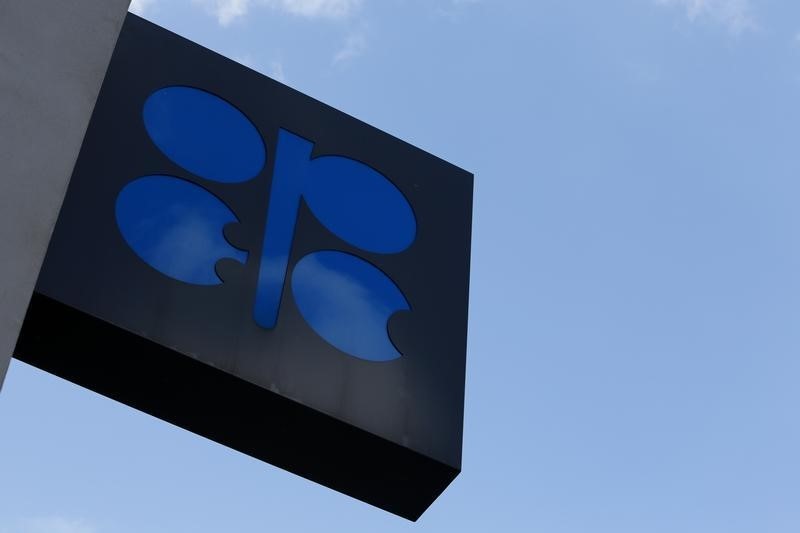By Alex Lawler
LONDON (Reuters) - OPEC raised its forecast of oil supplies from non-member countries in 2017 as new fields come online and U.S. shale drillers prove more resilient than expected to cheap crude, pointing to a larger surplus in the market next year.
Demand for crude from the Organization of the Petroleum Exporting Countries will average 32.48 million barrels per day (bpd) in 2017, OPEC said in a monthly report on Monday. That is down 530,000 bpd from the previous forecast.
The prospect of a larger surplus than expected adds to the challenge of OPEC and non-members such as Russia, who are making a renewed attempt to restrain supplies. Oil is trading at $47 a barrel, half its level of mid-2014, as a supply glut that OPEC hoped cheap oil would banish sticks around.
OPEC revised up its 2016 and 2017 non-OPEC supply forecasts, citing factors including the start up of Kazakhstan's Kashagan oilfield and a lower-than-expected decline in U.S. shale output, and said the immediate outlook was for more production.
"It is expected that there will be higher non-OPEC production in the second half of 2016 compared to the first half," OPEC said in the report.
OPEC expects non-OPEC supply to rise by 200,000 bpd in 2017, versus a previously forecast 150,000 bpd decline. The revision is mostly due to Kashagan, OPEC said, as the long-delayed giant field finally starts up.
On top of that, the forecast for this year was revised up by 180,000 bpd.
OPEC itself kept output near a multi-year high in August, pumping 33.24 million bpd, according to figures OPEC collects from secondary sources, down 23,000 bpd from July's figure, the report said.
The July figure is the highest since at least 2008, according to a Reuters review of past OPEC reports.
Near-record OPEC output, and higher supply from outside, could make it harder for OPEC and Russia to come up with steps to support the market. Producers are expected to meet in Algeria on the sidelines of the Sept. 26-28 International Energy Forum.
An attempt by producers to agree to a production freeze in April failed as Iran, wanting to boost oil exports that had been restrained by Western sanctions, refused to join and Saudi Arabia insisted all producers took part.
The August output figures in the report at least show no further large supply increases in top OPEC producers. As previously reported, Saudi Arabia told OPEC it reduced output by 40,000 bpd from July's record high of 10.67 million bpd.
Iran told OPEC it pumped 3.63 million bpd, steady from July's 3.62 million bpd, a slowdown in the rate of growth earlier in the year after the lifting of sanctions in January.
The OPEC report stopped short of predicting when supply and demand would rebalance, although it said signs of higher-than-expected demand in some big consumers would contribute to "a reduction in the imbalance of market fundamentals" in coming months".
At the start of 2016, OPEC expected the rebalancing to happen this year.
With demand for OPEC crude in 2017 expected to average 32.48 million bpd, the report indicates there will be an average surplus of 760,000 bpd if OPEC keeps output steady. Last month's report pointed to a small, 100,000 bpd surplus.

In the report, OPEC made no change to the global demand outlook, predicting demand growth of 1.15 million bpd in 2017.